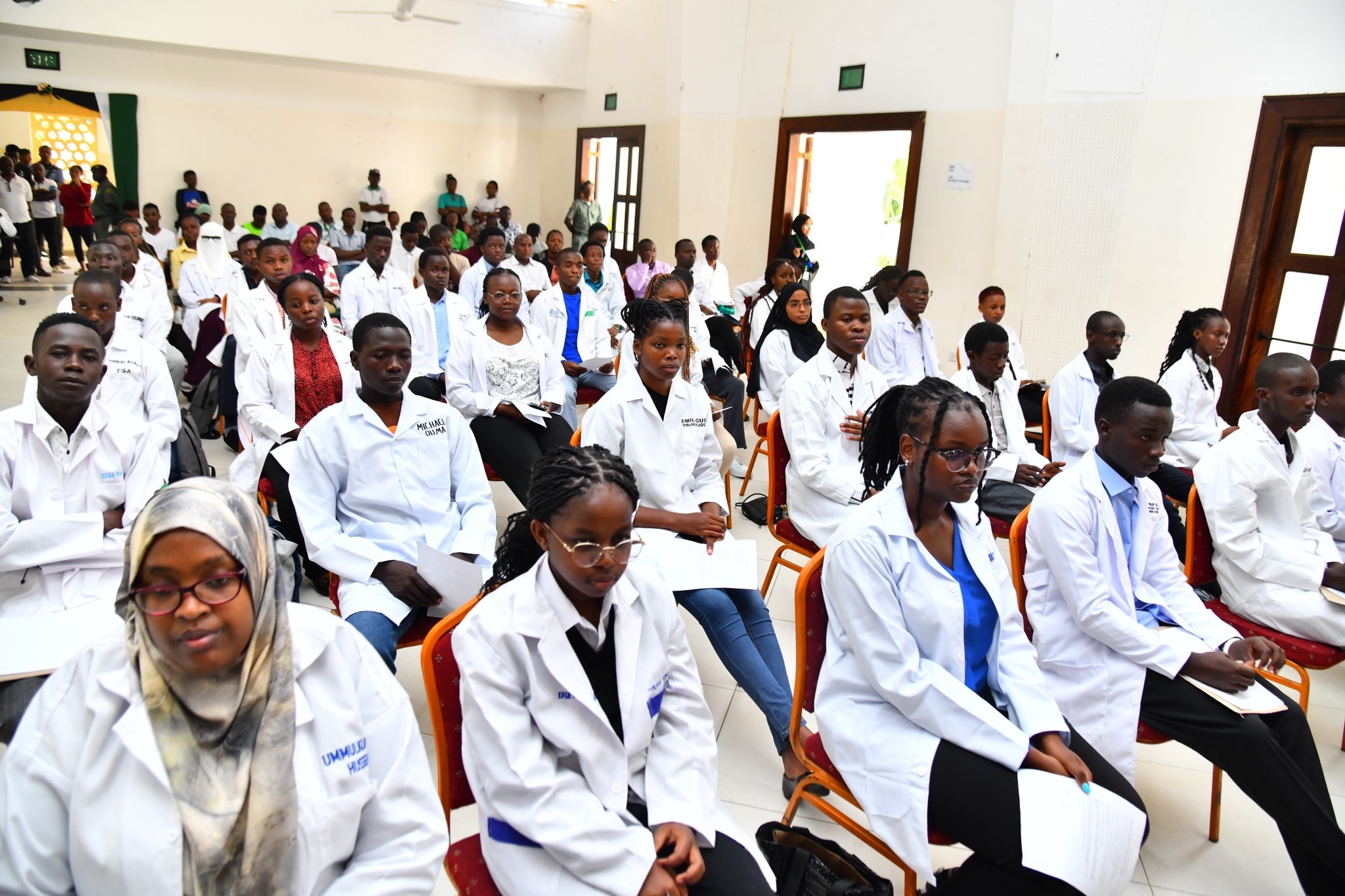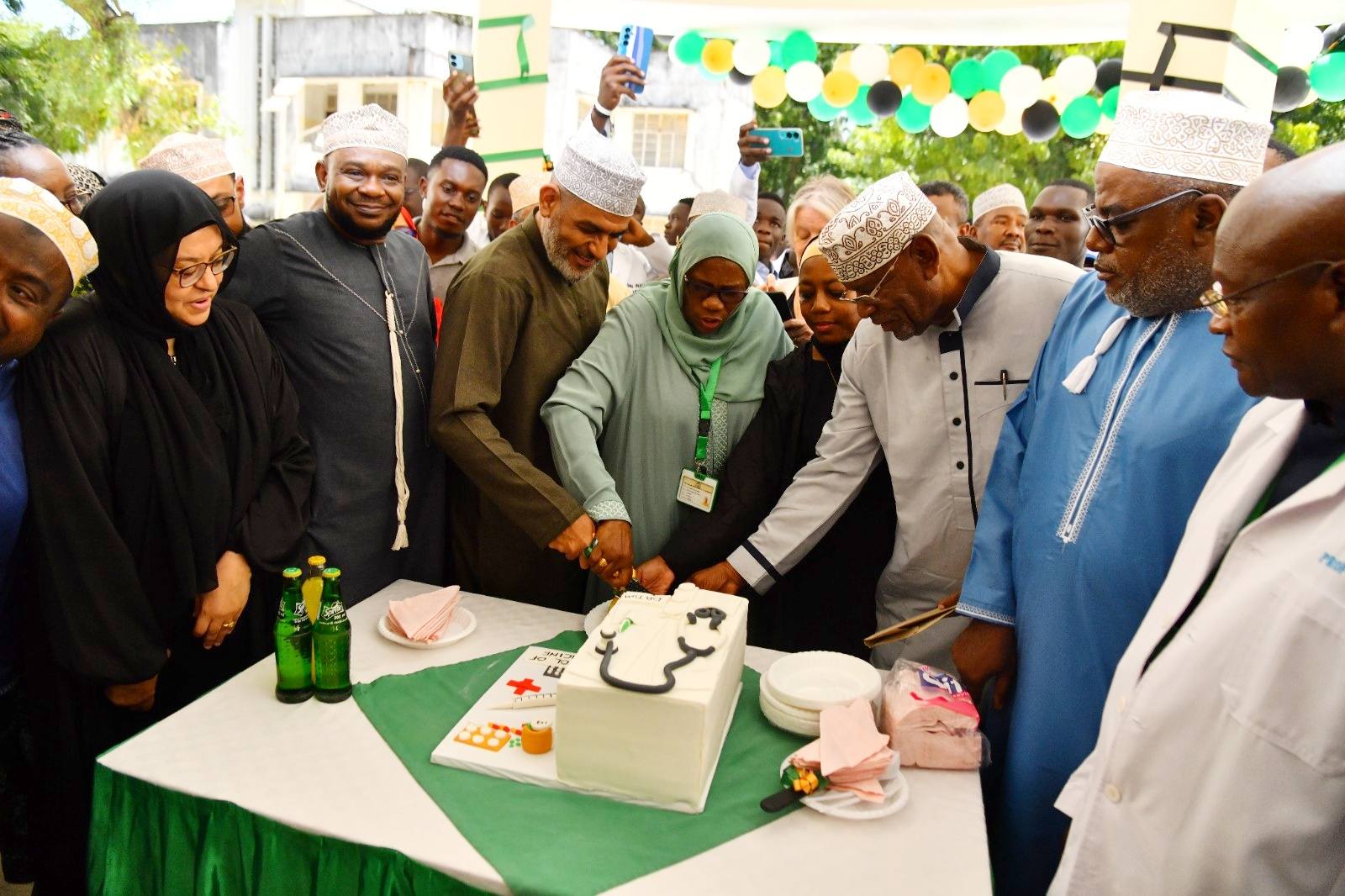 The first cohort of TUM medical students on Friday
/BRIAN OTIENO
The first cohort of TUM medical students on Friday
/BRIAN OTIENO Governor Abdulswamad Nassir and
TUM VC Leila Abubakar during the official launch of the TUM
School of Medicine and Health Sciences on Friday / BRIAN OTIENO
Governor Abdulswamad Nassir and
TUM VC Leila Abubakar during the official launch of the TUM
School of Medicine and Health Sciences on Friday / BRIAN OTIENOThe opening of the School of Medicine at the Technical University of Mombasa marks a significant milestone in the county’s education sector.
For the first time, students can now study medicine within Mombasa, eliminating the need to travel upcountry—an exodus that leaders say has contributed to brain drain over the years.
Governor Abdulswamad Nassir described the development as a game-changer, stating that education must not remain a privilege for a few but a light for all.
“Talent and brilliance are equally spread across Mombasa. Unfortunately, opportunities have not been,” he said. “This scholarship is not an act of charity—it’s an investment. And like any investor, the people of Mombasa expect a return on investment.”
The county government is sponsoring 12 of the first 66 students in the newly launched School of Medicine and Health Sciences, selecting one male and one female student from each of Mombasa’s six sub-counties.
Jomvu MP Badi Twalib, who had previously tabled a petition in Parliament to push for the establishment of a medical school in Mombasa, said it was a dream finally realised.
“Pwani University came much later than TUM but already has a medical school. This was long overdue,” he said.
TUM deputy vice chancellor Prof Joseph Rasowo said the opening of the school is a major step forward for Mombasa’s health and education pillars.
TUM now becomes the 13th chartered university in Kenya to offer medicine, and the first in Mombasa county.
Vice chancellor Prof Leila Abubakar revealed the journey to establish the medical school began more than a decade ago.
“We have been known for innovation, and this school will reflect that. Our students will be trained not just in medicine but also in research and biomedical innovation,” she said.
The national government allocated Sh266.9 million for the construction of the medical school, and an additional Sh35 million for mechanical ventilation and refrigeration.
A Belgian philanthropist, Dominique Molard, donated Sh12 million for equipment.
Abubakar thanked the Mombasa county government for providing access to health facilities for student training.
She also requested Governor Nassir to fulfil his promise to allocate land near the Coast General Teaching and Referral Hospital to ease access for clinical students.
Ghent University helped develop the medical curriculum, with its representative Prof Marleen Temmerman saying the school will make a major difference for Mombasa and the Coast region.
“The curriculum is patient- and problem-solving oriented, with strong community engagement,” she said.
Temmerman noted that TUM students are uniquely positioned to benefit from CGTRH’s advanced technologies, including telemedicine and minimally invasive surgical procedures.
TUM council acting chairman Paul Mwasaru said the school is built on the principle that health is a basic right.
“We envision this school as a centre of research, excellence, and community service. It must align with the goals of Universal Health Coverage,” he said.
Belgian honorary consul Louis Derrick announced that four of five Flemish universities—Ghent, Antwerp, Brussels, and Hasselt—are working with TUM in various health-related collaborations.
“We are on the verge of approving a 10-year university cooperation programme, which will further boost TUM’s academic potential,” he said.
Mombasa Senator Mohamed Faki noted the irony that while the Coast was among the first regions to embrace formal education, it was among the last to establish a medical school.
Governor Nassir reminded the first cohort of medical students to remain grounded in ethics.
“No modern medicine can cure the disease of bias—only a constant reminder and prayers can,” he said.
He also announced that the county's scholarship initiative would extend beyond medicine to cover students in other faculties, with graduates being prioritised for county employment.
“You are the pioneers. Study hard and guard jealously the investment being made in you,” he told the students.










